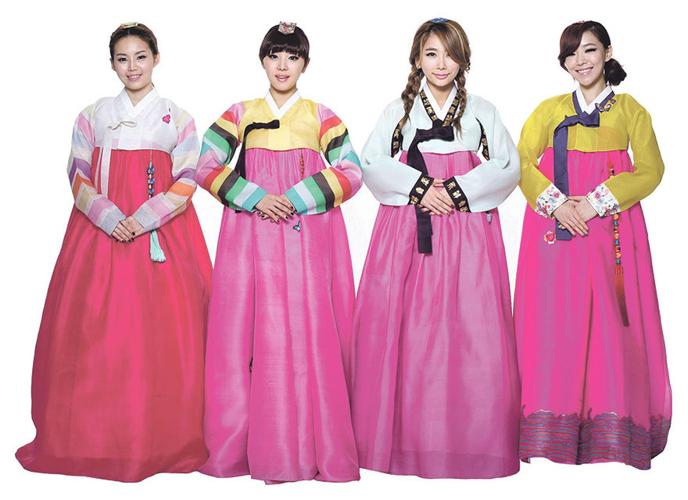Prepare for the K-Popcalypse! What once seemed just a fad refuses to fade away. As everyone knows by now, the gangbuster success of Psy’s “Gangnam Style,” the most-watched music video in the history of the planet, catapulted South Korean pop — K-pop for short — onto the global stage. Dominant across Asia for more than a decade, K-pop has gained legions of new fans in Europe, Latin America, and points farther afield, fueled by the more than two billion viewers who got a thrill watching Psy horsing around in his psychedelic romp.
Here in the United States, K-pop has been slower to make inroads, but distinct signs point to its growing popularity. For the first time, headliner K-pop bands are now mounting American tours and earning invites to Austin’s SXSW and other prestigious music festivals.
Not since the British Invasion of the 1960s has a national pop movement so bedazzled the world. What’s behind K-pop’s appeal, allowing it to supersede cultural obstacles and language barriers? Many fans cite the splashy videos – surreal, colorful affairs in the vein of “Gangnam Style” that boast lavish production values as conceptually rich as Hollywood blockbusters and that push the outer limits of sensory overload. The bands themselves are hardly slouches. Members work their buns off, practicing how to sing in unison and move in sync with one other, often from a tender age, when they can be weaned from their families and enrolled in a performing regimen as demanding as any martial arts training.
But that’s just preparing for a possible career. A band on the cusp of fame, or one that’s scored a modest hit, must maintain a grueling schedule of concerts, public appearances, and studio sessions. The band might release a dozen or more new songs in just a few months — each featuring its own intricate, signature dance moves — with the biggest buzz going to the acts achieving the catchiest and most-copied new steps.
The songs, full of infectious hooks, convey a bubbly innocence that evokes a simpler past, but that doesn’t render them shallow or unsophisticated. What’s exhilarating is how often K-pop breaks fresh ground by bridging the continents, representing a fusion of East and West and disparate eras and genres. Take “Expectation,” a soaring ballad of romantic heartache that signaled a coming-of-age for Girl’s Day, previously known for its bubblegum fare and ingénue posturings. It opens soulfully, bringing to mind the Motown hits from yesteryear, but it evolves into something unexpected and different. As the singers trade more fever-pitched and fast-paced falsetto high notes against a reverberating techno cascade, their refrains achieve a turbocharged momentum that is, frankly, swoon-worthy. Pitchfork music critic Jakob Dorof has hailed it as “one of the most effective club bangers K-pop can claim.”
However you want to parse it, “Expectation” is a rush – as studio-massaged and hypnotic as anything you’re likely to have heard since the discredited producer Phil Spector perfected his Wall of Sound and squired in so many of the American girl groups that ruled the 1960s. Detractors might carp about the autotuned vocals in K-pop, in addition to the enormous amount of sampling that goes on and the open infatuation with Eurodance and disco.
Yes, at its worst, K-pop can be manipulative and derivative. But isn’t it also a peak of creativity when a K-pop composer liberally lifts from Kanye West and Cole Porter, and then synthesizes the mix to produce something that’s faintly and warmly familiar, but never heard before?
Spector’s heyday may be long-gone stateside, but in South Korea, boy and girl bands still remain all the rage — sexually segregated, although both boys and girls will sport androgynous looks and fashions. In that spirit, here is a salute to some of the girl bands shaping K-pop and defining it as such a robust, eclectic movement. You likely won’t hear their works on American radio, but you’ll find every last one of these songs on YouTube, where sometimes scores of live and staged versions roost, variably aimed at Korean, Japanese, Chinese, and, yes, even Western audiences. If you’re more interested in the boy bands, have no fear: I’ll be returning down the road with another Pasatiempo survey devoted exclusively to them.
Brown Eyed Girls
Since their debut in 2006, Brown Eyed Girls have pushed the envelope. Like Madonna, they are forever reinventing themselves, trying out diverse genres ranging from electronica and rap to power pop and bossa nova, but often with a seductive R & B overlay and risqué lyrics. The band, which its fans refer to as BEG, has gone through many musical phases; you can get a feel for its general aesthetic in “Abracadabra,” “Sixth Sense,” and “Kill Bill” — all of them torch songs that hint at some supernatural menace and are propelled by electrifying dance beats. The four band members are all well over thirty now — battle-scarred veterans on the youth-oriented K-pop scene — except for the youngest and most provocative member of the group, Ga-In. You might have seen her opposite Psy in his “Gentleman” video, where he pays homage to BEG by emulating their dances from “Abracadabra.” Much of K-pop is sweetness and light, but Ga-In is an anomaly. She has a pixielike presence but also a tough edge, as evidenced by her solo hit from last year, “FxxK U.”
Girls Girls Girls
OK, I’m cheating here. There’s no K-pop band I know of named Girls Girls Girls. But Girl’s Day, with its miraculous makeover from gang of teeny-boppers to mature act in the form of that breathless hit “Expectation” first indulged in “Oh! My God,” wherein the bandmates dodged their parents for a wild girls’ night out on the town — real schoolgirl stuff. And Girl’s Day wouldn’t even exist if it hadn’t been preceded by Girls’ Generation, the megagroup that actually paved the way for Psy by earlier testing American, Japanese, and other overseas markets. Girls’ Generation is most noted for its tales of teen angst and longing — for instance, “Gee,” “I Got a Boy,” and “Genie.” But I’m partial to “Paparazzi,” which opens and closes with a tip of the hat to Gene Kelly’s “Singin’ in the Rain.” To cap off the Girls’ triumvirate, watch the Wonder Girls’ “2 Different Tears,” which offers moddish James Bond and Batman references and a zany cameo by MADtv comedian Bobby Lee.
f(x)
The first K-pop band ever to appear at SXSW, (f)x has a contemporary, international flair to go along with its functional moniker. That reflects the band’s cosmopolitan roots — it’s a mix of Chinese, Taiwanese, Korean-born, and American members. The synth-pop “Electric Shock” is the girls’ monster hit, presaged by “Hot Summer,” their sweltering, blasting-furnace companion piece to Hyun-a’s “Bubble Pop.” It’s so solid, the accompanying music video has a black-striped hot-pink army tank serve as some sort of backdrop for all the bling these young women are wearing. The band’s songs tend to be frothy and escapist, but do not write (f)x off as a lightweight. Its harmonies are tight, and its music has a gossamer quality, like seeing a dragonfly skirting across a pond. And, as Pitchfork critic Dorof attested, “f(x) is the most reliably risk-taking act in K-pop.” At least it’s one of the few K-pop girls’ bands I’ve ever seen compared to Thelonious Monk instead of the Shangri-Las. Yes, (f)x has a jazzy, experimental side — and that’s all for the good — but the girls are still walking in the sand, following the tracks first laid by the Shangri-Las, and that’s all for the good, too.
Orange Caramel
This is one of those rare instances in which a side venture, Orange Caramel, has surpassed the band from which it sprang. In this case, the original, larger group was After School, which, for a brief spell, reigned as the undisputed divas of K-pop, patterning themselves after U.S. ensemble the Pussycat Dolls. But when Kahi, After School’s charismatic former leader, “graduated,” the act languished — until some marketing wunderkind at the Pledis Entertainment label plucked out three of the livelier principals to form the dreamy, absurdist Orange Caramel. The group’s songs are pastel-shaded fantasies. K-pop doesn’t get any stranger, or more sublime, than in the bewitching “Catallena,” in which the singers masquerade as human-sized sushi to sing the praises of a girl so chic that no one can resist her charms. “My Copycat” is also a lark. It has an embedded “spot-the-differences” game, challenging viewers to survey side-by-side visual panels to locate missing or rearranged bananas, lizards, and sundry bizarre objects. Another segment of the video features a series of Where’s Waldo-esque tableaux, and you have to spot the Caramels against a blur of dancing nuns, ping-pong players, skeletons, and costumed figures. Now, how cool is that?
2NE1
If I had to choose the K-pop girl band most likely to break out big in the U.S., I’d lay odds on hip-hop stylists 2NE1 (an acronym alternately said to stand for “twenty-one” or “to anyone”). The girls have clearly studied at the altars of Rihanna and Beyoncé, and modeled themselves accordingly. In fact, they have already recorded some songs in English, collaborated with the American singer will.i.am, and done a joint promotional tour with Nicki Minaj for the Adidas brand. Befitting their Western leanings, they’re bold and swaggering and prone to aggressive bravado, attired in spiky or Gothic outfits and outrageously colored wigs. They come out fighting, shrouded beneath hooded boxing suits, in “I Am the Best,” their anthem of female empowerment. “Can’t Nobody” is as tough, defiant, and hard-driving as Joan Jett’s “I Love Rock ’n’ Roll.” Their act may all be a conceptual charade, but when the youngest member, Minzy, belts out, “I’m so bad-bad, I’m so good-good,” you’d better believe her, because she looks like she means business.
T-ara
I’ll come clean. I can’t be objective about T-ara, pronounced “tiara.” I’ve been hooked on the band since it surfaced in 2009, and it remains my number-one K-pop passion. I can gladly while away many hours soaking up the girl’s silliest songs, like “Bo Peep Bo Peep” and “Crazy Because of You.” I’m not alone. T-ara’s recent collaboration with China’s Chopstick Brothers, a comic remake of “Little Apple,” has racked up nearly half a billion views on Youku, the Chinese answer to YouTube. At home in South Korea these days, T-ara’s popularity has sagged under a cloud of scandal after an intraband dispute led one of them to resign. For a traditionally minded pocket of K-pop die-hards, that proved an unpardonable sin. Too bad, because T-ara’s “big room” blast from last fall, “Sugar Free,” is a heavenly confection, easily deserving the acclaim previously accorded to their string of certified hits that includes “Number Nine,” “Lovey-Dovey,” and the rollicking, disco-themed “Roly Poly.” If you’ve got the time, check out the 16-minute music video they created for “Day by Day.” It’s an estrogen-laden Mad Max, positing a bleak, post-nuclear, tribalistic future with svelte Amazonian warriors engaging in swordplay. Beats a haggard Mel Gibson.
Crayon Pop
Remember that cartoon series The Powerpuff Girls? Crayon Pop is their living embodiment. The girls are cute, wholesome kewpie dolls who wear bright, monochromatic tracksuits and helmets. They don’t undulate so much as mount mathematically precise dance movements that more closely resemble a calisthenics workout. Their ditties might be innocuous, but they are so much fun to watch that you wish all the world would bob up and down in unison to “Bar Bar Bar” or “Bing Bing.” They represent what Koreans call “aegyo,” a pure and uncorrupted youthful exuberance. Crayon Pop didn’t achieve success through the usual route: by competing in battles of the bands on Korean variety TV shows. Instead, the group grabbed the public’s attention via a more viral means — a series of free, guerrilla concerts they staged on the streets of major cities. It was somewhat surprising, but ultimately apropos, when Lady Gaga tapped the girls to be one of the opening acts for her ArtRave: The Artpop Ball tour last summer in the United States. The five members include twins Choa and Way, who front their own subunit, Strawberry Milk, guaranteed to melt the hearts of even the most jaded and curmudgeonly listeners. If I had to spend a lifetime as a character in an arcade game, I’d want Crayon Pop as the eternally looping soundtrack.
4Minute
This is the girl group led by Kim Hyun-a, who broke loose after beguiling Psy in the train station in “Gangnam Style.” 4Minute is more generic than the other bands I’ve singled out here, but there’s no denying the spitfire allure of Hyun-a, who is still quite young (just twenty-two), considering the enormous exposure she has enjoyed since her pas de deux with Psy. Her solo “Bubble Pop” is arguably the ideal antidote to a dreary winter. It’s as light and breezy an ode to summer as anything by the Beach Boys. She reunites with Psy in the music video “Ice Cream,” which is hardly subtle but overheated and sexy in a circuslike fashion Nino Rota (Federico Fellini’s film-score composer nonpareil) undoubtedly would have appreciated. In her collaborations with 4Minute, “Hot Issue” and “Mirror Mirror” emphasize Hyun-a’s sultriness, but the hummable ballad “Heart to Heart” lingers long after you’ve heard it, offering contradiction to the naysayers who make out that she’s simply an attractive young woman with no redeeming depth of talent. ◀






